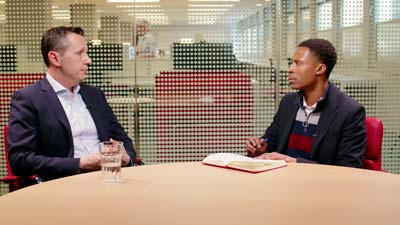This article is part of Morningstar's Guide to Retirement Saving. All this week we are arming you with the tools you need to boost your pension pot and secure the best possible income in retirement.
Emma Wall: Hello, and welcome to Morningstar. I'm Emma Wall and I'm joined today by Tom Stevenson from Fidelity.
Hello, Tom.
Tom Stevenson: Hello, Emma.
Wall: So we've reached the part in our retirement special week, where we're looking at what investors are doing. You know what retail investors on the street are doing post-retirement. So, what are people doing?
Stevenson: Well, it's quite early days, I mean, we've only had, what 1.5 week, since the new rules came into effect. So we've had a lot of phone calls. I think most people actually are phoning up just to find out what their options are. You know, what the new rules mean for them.
But people can now take out their money and we have seen some people take out their money and lot of those are people with just very small pots. And that makes sense really, because if you've got a very small pot, there is not much point in investing it for an income, because the income would be very low, you might as well take it and enjoy it.
At the other end of the scale, we've had one investor who took a very big, a seven-figure sum out and, of course, they would have paid quite a big tax bid on that and that's one of the considerations that people need to bear in mind is the tax, if you to take a big lump sum out of your pension. Now, in this particular case, it didn't matter to this investor because he knew he was going to be a higher rate taxpayer, whether he paid 45% on his lump sum or 45% on his income, really made no difference. So a very variety of withdrawals we're seeing.
Wall: So let's take a step back, because of course, these pension changes don't just affect people in retirement; they affect people saving for retirement, because goals have changed, you no longer have to buy annuity. So where are you seeing in the inflows, for people investing for retirement?
Stevenson: Yes, and indeed people investing for retirement are investing before they retire and after they retire, because what we're finding is, if you can take your pension pot when you're 55 and the chances are that you're going to live for quite a considerable time after that.
So anyone investing around retirement or post-retirement needs to think about both an income, but they also need to think about the potential for capital growth, so that they can maintain the real inflation-adjusted value of their funds. And actually we're seeing that reflected in what people are investing in. It's a mixture of funds for income and funds for capital growth.
Wall: I think it rather skews traditional portfolio theory, doesn't it? The whole concept of retail investors and institutional investors that as you approach your retirement date, you should sort of come down the risk scale and streamline your investments, flightpath, there are all these sort of buzzy words, which basically mean, out of equities into bonds.
Stevenson: That's always been the conventional wisdom, hasn't it? That as you approached your retirement date, because you knew that you wanted to use the money to buy an annuity, you wanted to protect the value of your pension pot as you came to that date, so you de-risked the portfolio, you moved into cash or into, say, for bonds. When people are investing on a 30-year timescale even at retirement, they need to think a bit differently.
So they need to think about investing for growth, so that they don't get caught out by inflation, because over a 25, 30 year period, inflation can wreak a real havoc with your capital, if you're not careful.
Wall: Having said that, that doesn't mean there is no longer a point or a position for cautious assets within the retirement portfolio, because of course, you are more dependent on a regular income in retirement, because you don't have a wage.
Stevenson: No, that's right. I think an approach that some people are taking, which is quite sensible is that they do a bit of a mix and match. So that they'll have – they will annuitize a small proportion to cover their basic outgoings, then they would invest the rest for a mixture of supplementary income and capital protection as well and I think that's a good approach.
Wall: Tom, thank you very much.
Stevenson: Thank you.
Wall: This is Emma Wall for Morningstar. Thank you for watching.




























